Deciphering the special set of vocabulary that comes along with dining out in Spain can baffle even those of us who aced our Spanish classes in school.
From figuring out how to ask for the bill in Spanish to ordering the perfectly cooked steak, this guide has got you covered with the essential words and phrases that will help you tackle any restaurant in Spain like a pro.
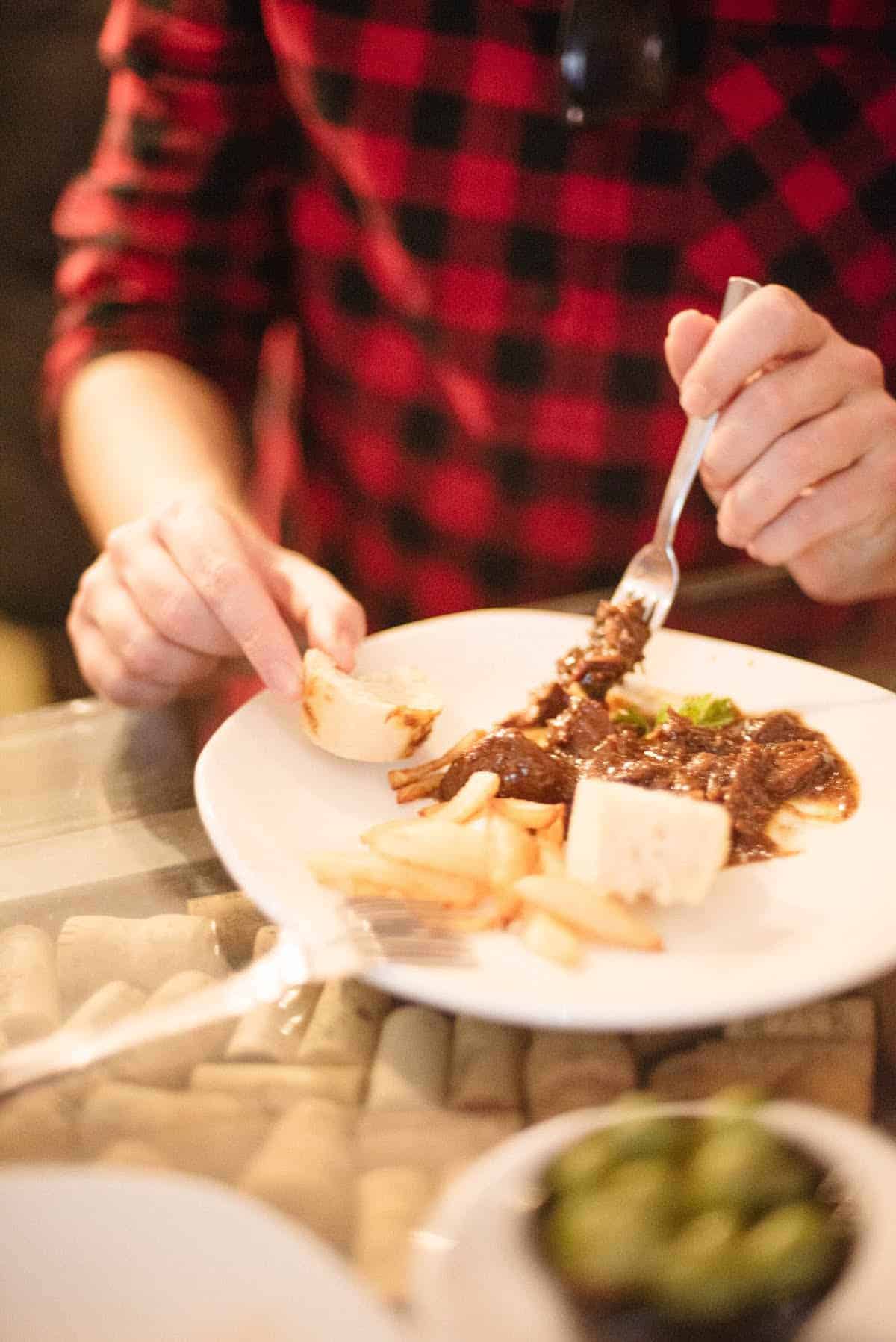
You don't have to be fluent in Spanish to eat amazingly in Spain, but there are a handful of words that will make the experience a bit easier. From deciphering different parts of the menu to ordering exactly what you want, these 16 foodie words and phrases will help you eat (and order!) like a local.
1. La Cuenta: Check or Bill
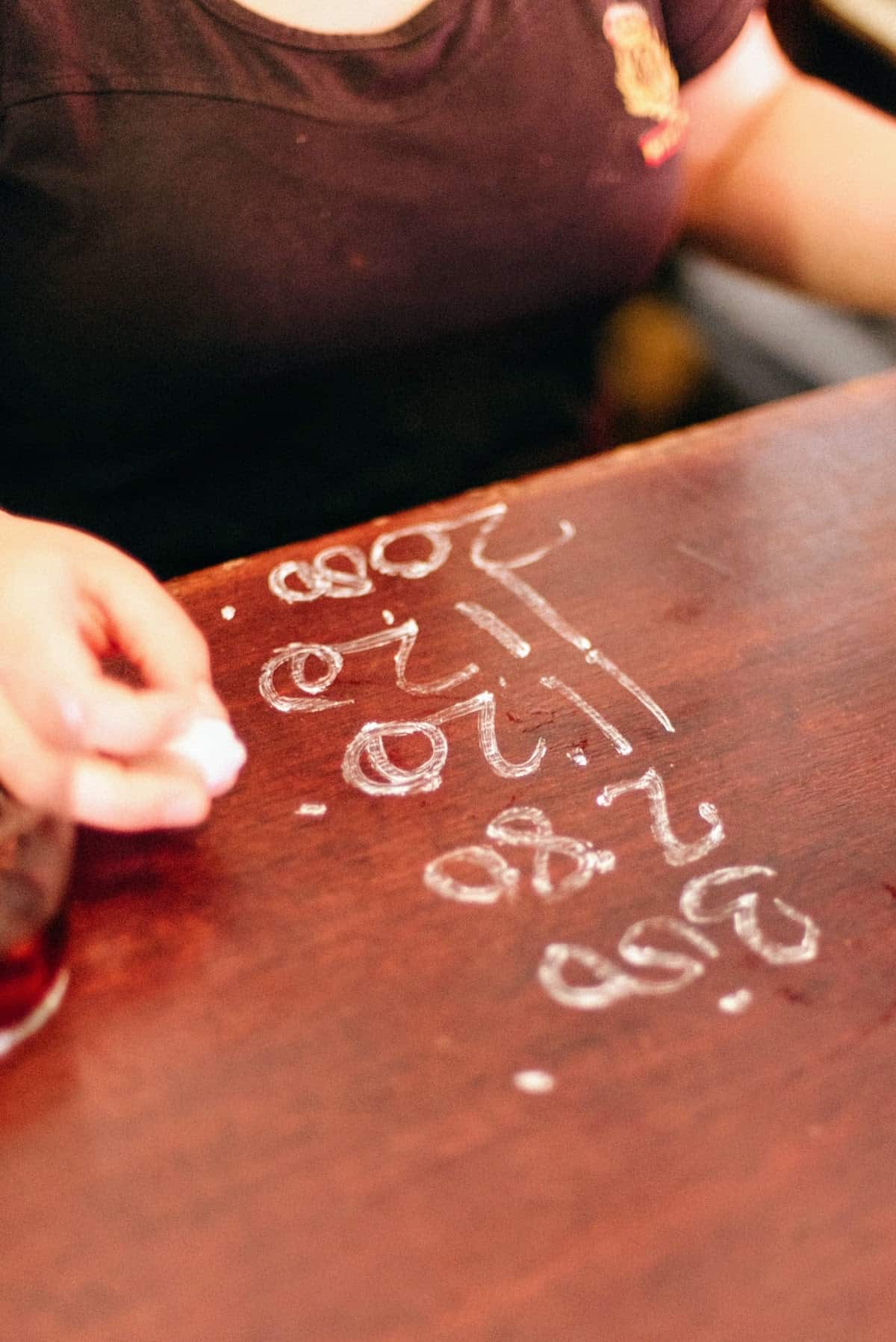
Before we get into the words you'll need for ordering, let's start at the end of the meal. It's important to know how to ask for the bill in Spanish—especially because you usually won't get it until you do!
When dining out in Spain, asking for the check is as easy as catching the server or bartender's eye and making a gesture like you're writing in the air. If you do want to use words, though, go with "la cuenta."
According to Spanish restaurant etiquette, it's considered rude for waiters to bring the check before diners ask for it. Speak up when you're ready to pay; otherwise, you might be waiting for quite a while!
How to use it: La cuenta, por favor. (The check, please.)
2. En Su Punto: Medium Rare
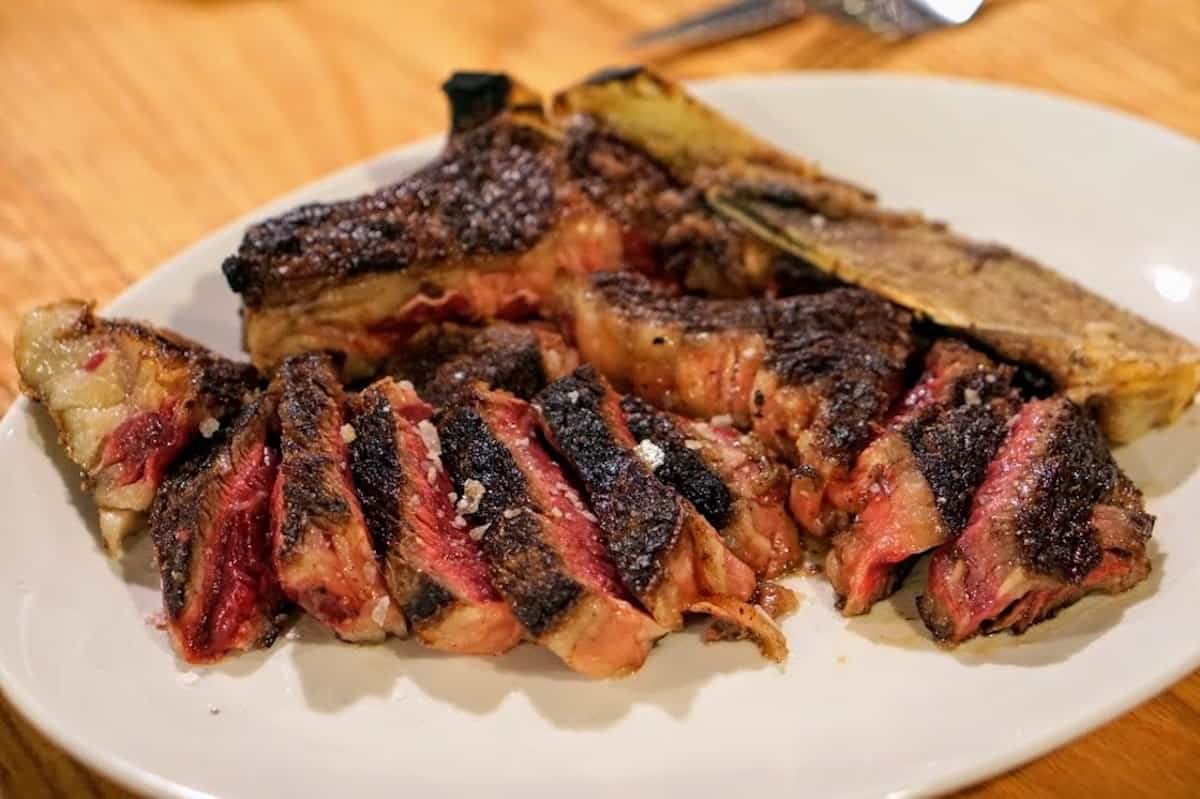
If you want to fully enjoy delicacies like chuletón (ribeye) and solomillo (tenderloin), you'll need to know how to order steak in Spanish.
You can ask for your steak to be cooked however you like, but the most common preparation is "en su punto." Literally translated, this means "at its point"—as in meat cooked to its point of perfection. This is the phrase to use if you want a medium rare steak when dining out in Spain.
To order a rare steak, ask for it "poco hecho." A well-done steak would be "muy hecho." Keep in mind that waiters will typically only ask how you would like your meat cooked if you've ordered a beef steak.
How to use it: El chuletón para mi en su punto, por favor. (I'd like my steak cooked medium rare, please.)
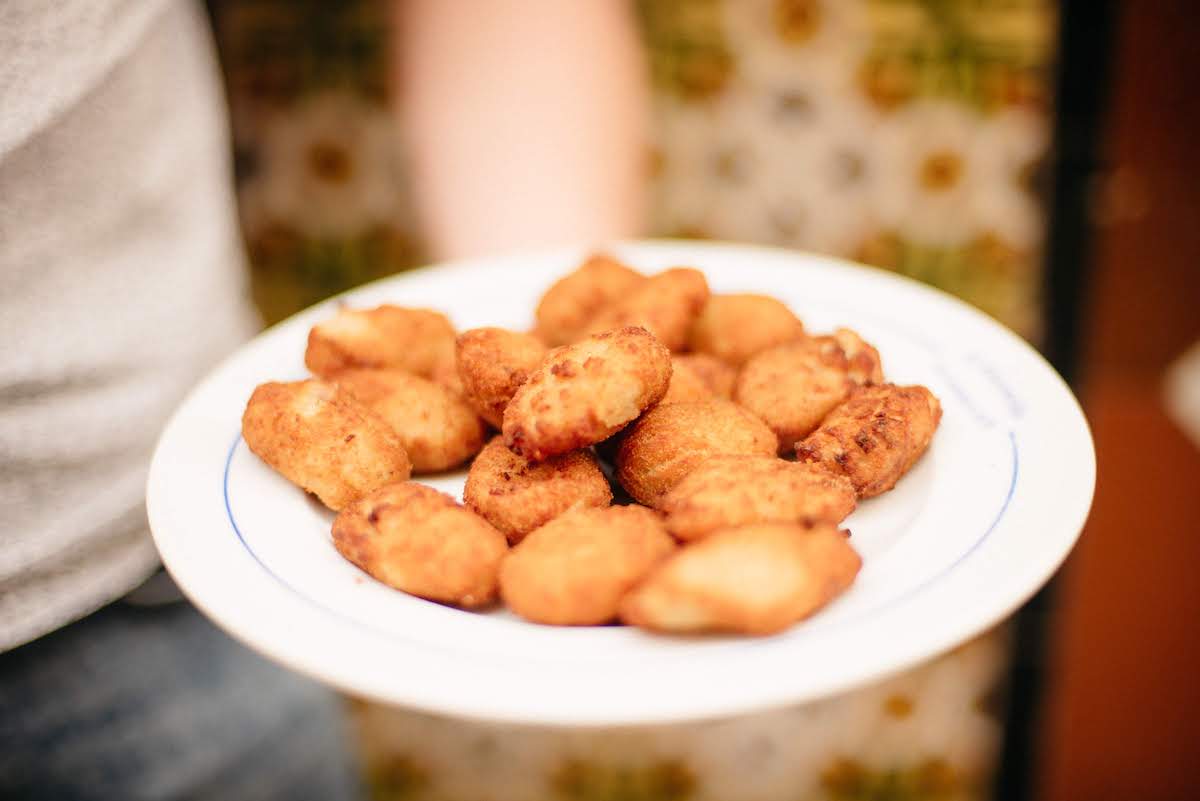
When dining out in Spain, you'll find that many meals are served family style. The large plates that are ordered for the entire table are called raciones.
The only difference between raciones and more commonly known tapas is usually just their size! The general rule of thumb is to order as many raciones as there are people eating, place them all in the center of the table, and serve the food onto individual plates.
A ración generally provides enough food for three or four people. There's also another, medium-sized option on the spectrum between tapas and raciones: the media ración, which is usually enough for two people.
How to use it: ¿Nos pones una ración de croquetas? (We would like a shared plate of croquettes.)
4. Tapa: Small Plate
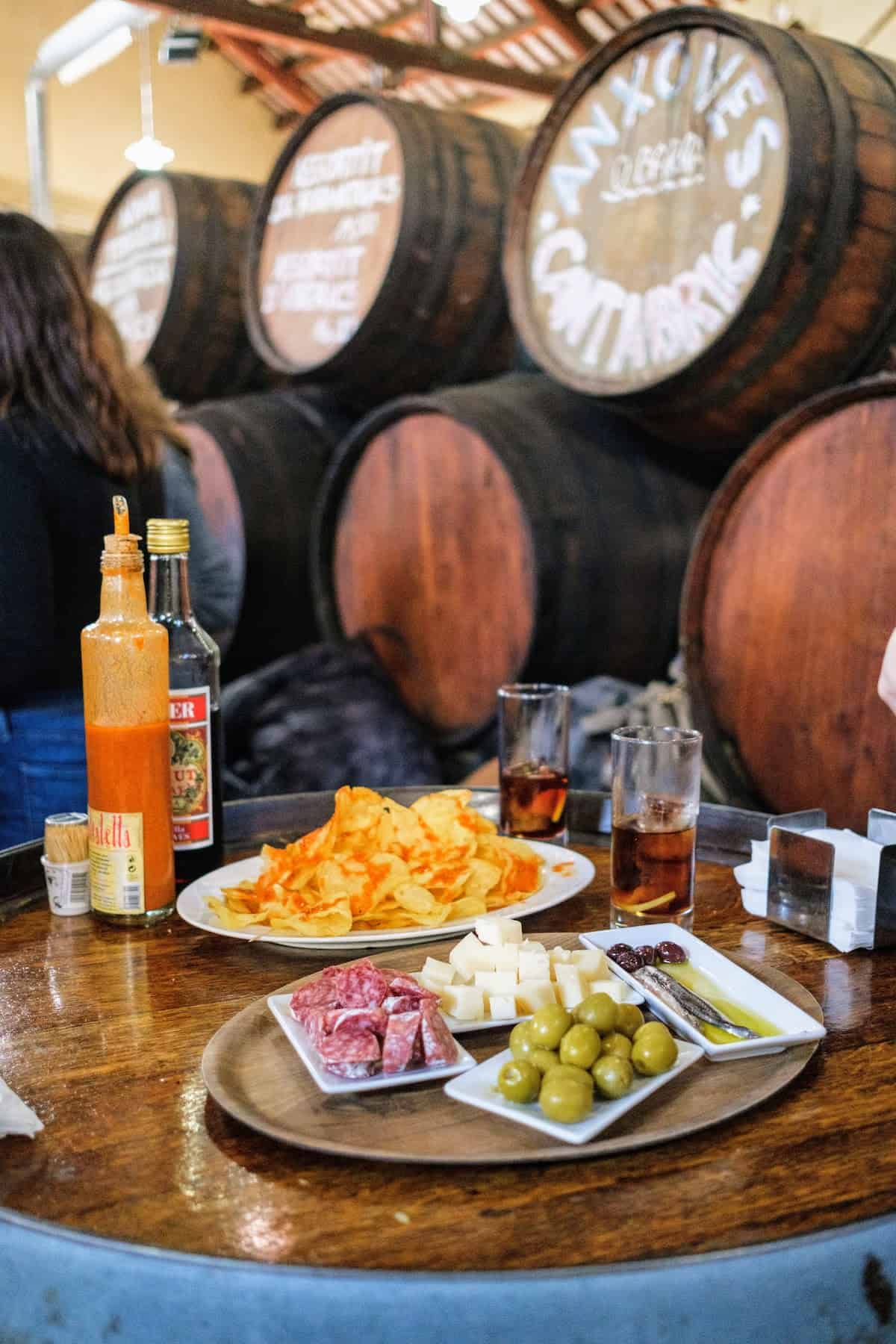
Contrary to popular belief outside of Spain, the word "tapa" refers only to the size of a plate, not what's on it! Tapas are simply small amounts of food.
When dining out in Spain, a tapa can be anything from two triangles of cheese or a dish of olives to a mini hamburger or even a small portion of paella—and many tapas recipes are easy to recreate at home.
In cities like Madrid and Granada, tapas sometimes come free when ordering a drink. In other places, they cost money—but it's well worth it for the quality and innovation they often represent.
How to use it: Me encanta este sitio. Las tapas aquí son riquísimas! (I love this place. The small plates here are delicious!)
5. Pintxo: Small Plate with a Skewer
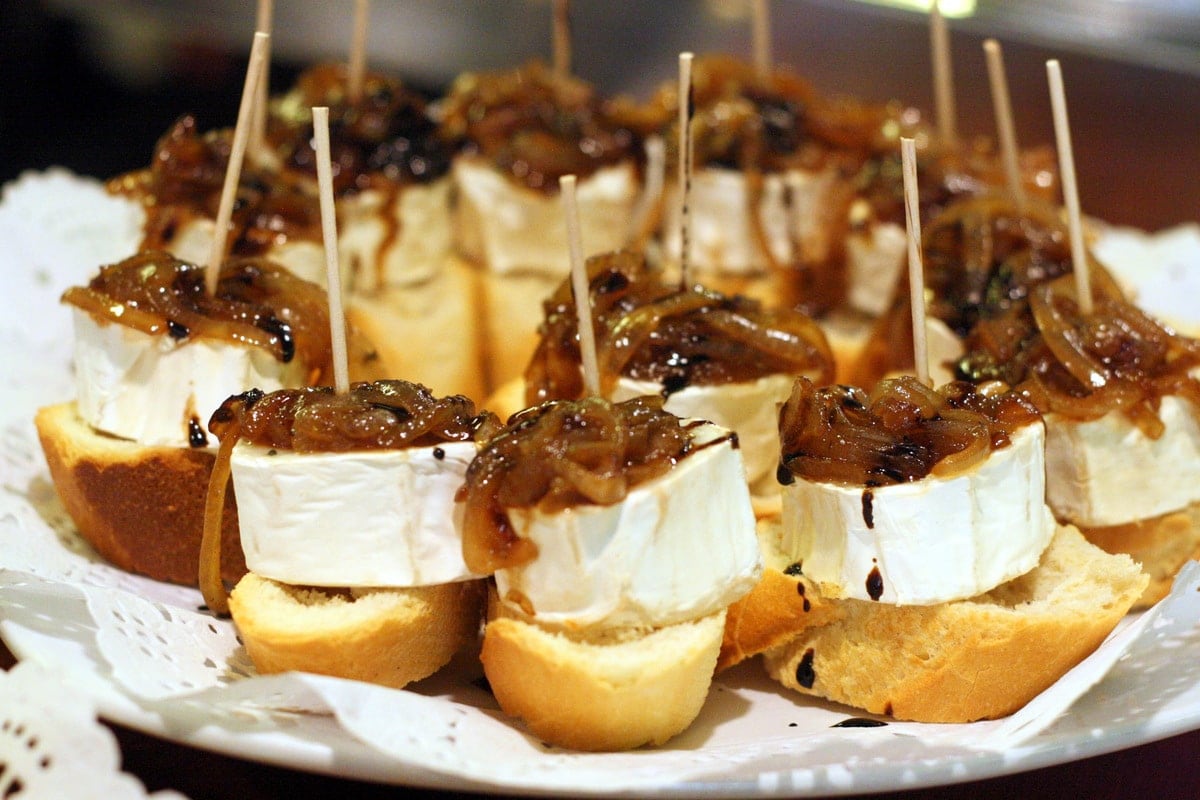
Head up to the north of Spain and you'll find bars lined with colorful, eye-catching small bites skewered atop pieces of bread. Welcome to the land of pintxos!
"Pintxo" is simply the Basque word for "tapa." Following Basque tradition, pintxos are often a bit more elaborate than tapas and are almost always served atop a medallion of bread with a skewer through the entire thing.
How to use it: Me gustaría un pintxo de queso de cabra y cebolla caramelizada. (I would like a small plate of goat cheese and caramelized onion.)
6. Menú del Día: Daily Lunch Special
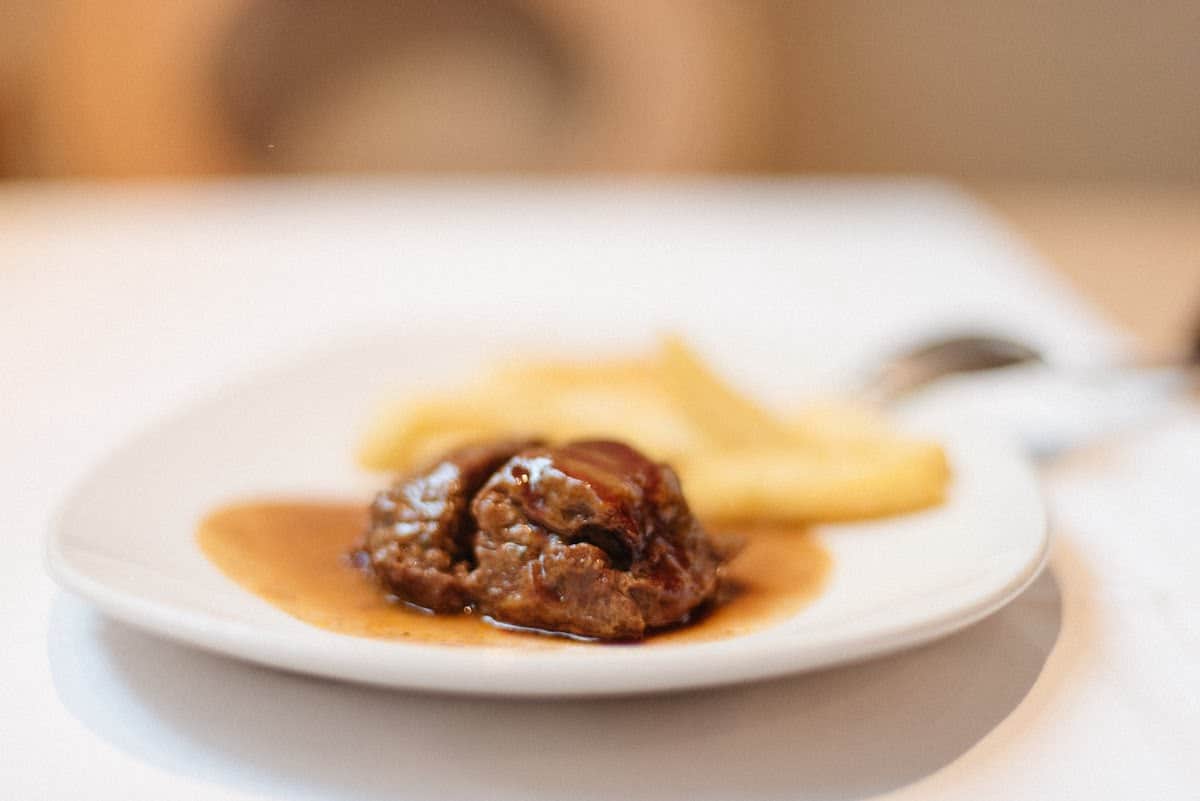
Daily fixed-price menus, or menús del día, are a thing of beauty when dining out in Spain. They usually consist of three or four choices each for both a first and second course, bread, a drink, and either dessert or coffee. All of that will set you back just €10–16!
Menús del día are only served at lunchtime, and usually only during the week. Some restaurants also offer a lunchtime menú de fin de semana on weekends, but it tends to be more expensive than its mid-week counterpart.
How to use it: ¿Qué tenéis de menú del día? (What are the options for the menu of the day?)
7. Caña: Small Draft Beer
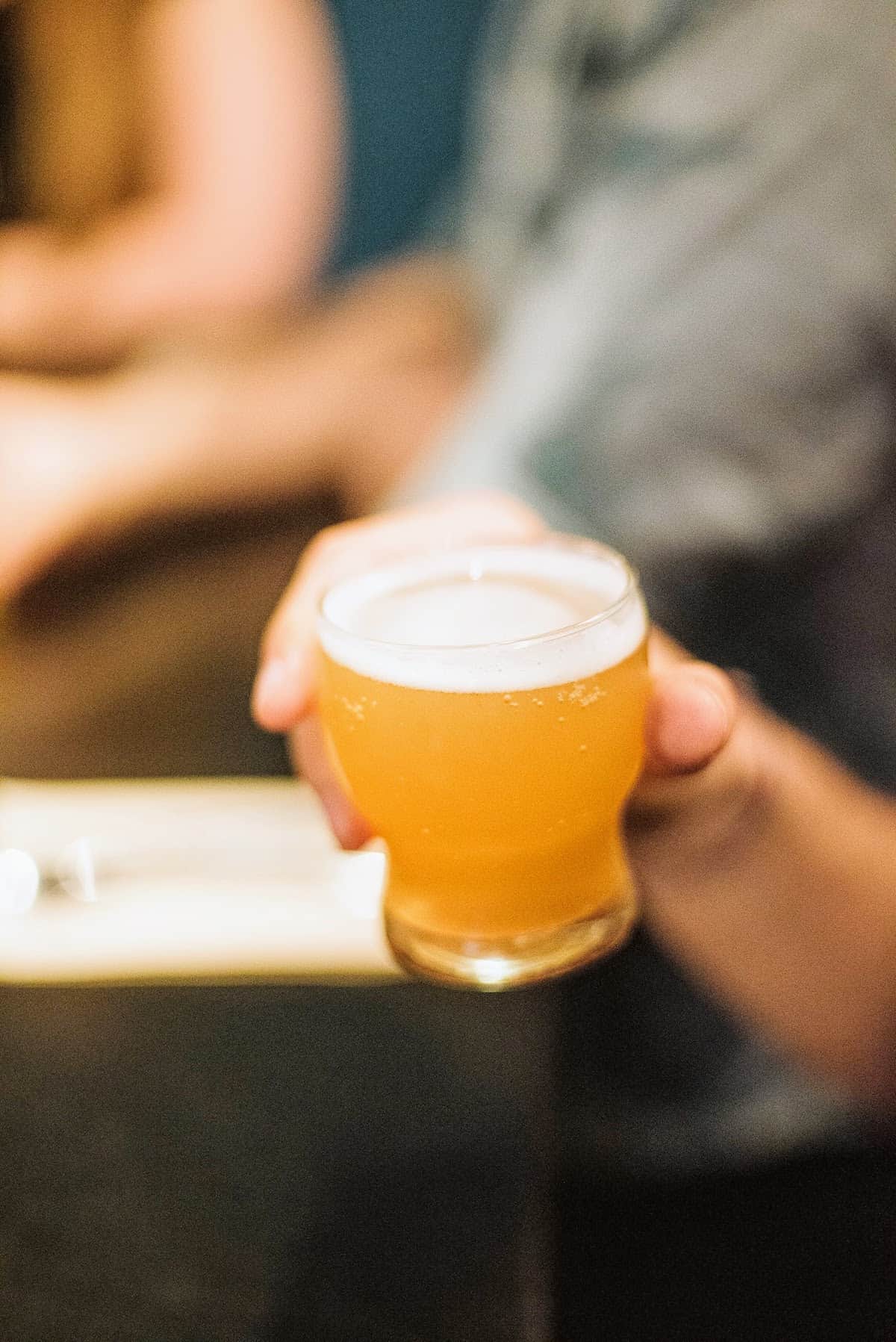
A caña is a short glass of draft beer. Cañas are usually about 200 ml (roughly ¾ cup).
Beer in Spain is most commonly ordered by size, as many bars only serve the local brew on tap. So instead of ordering a Mahou or an Estrella Damm, you would ask for a caña. However, the craft beer boom in Spain is slowly changing this, adding more beer options seemingly every week!
How to use it: ¿Me pones una caña, por favor? (I'll have a small draft beer, please.)
8. Postre: Dessert
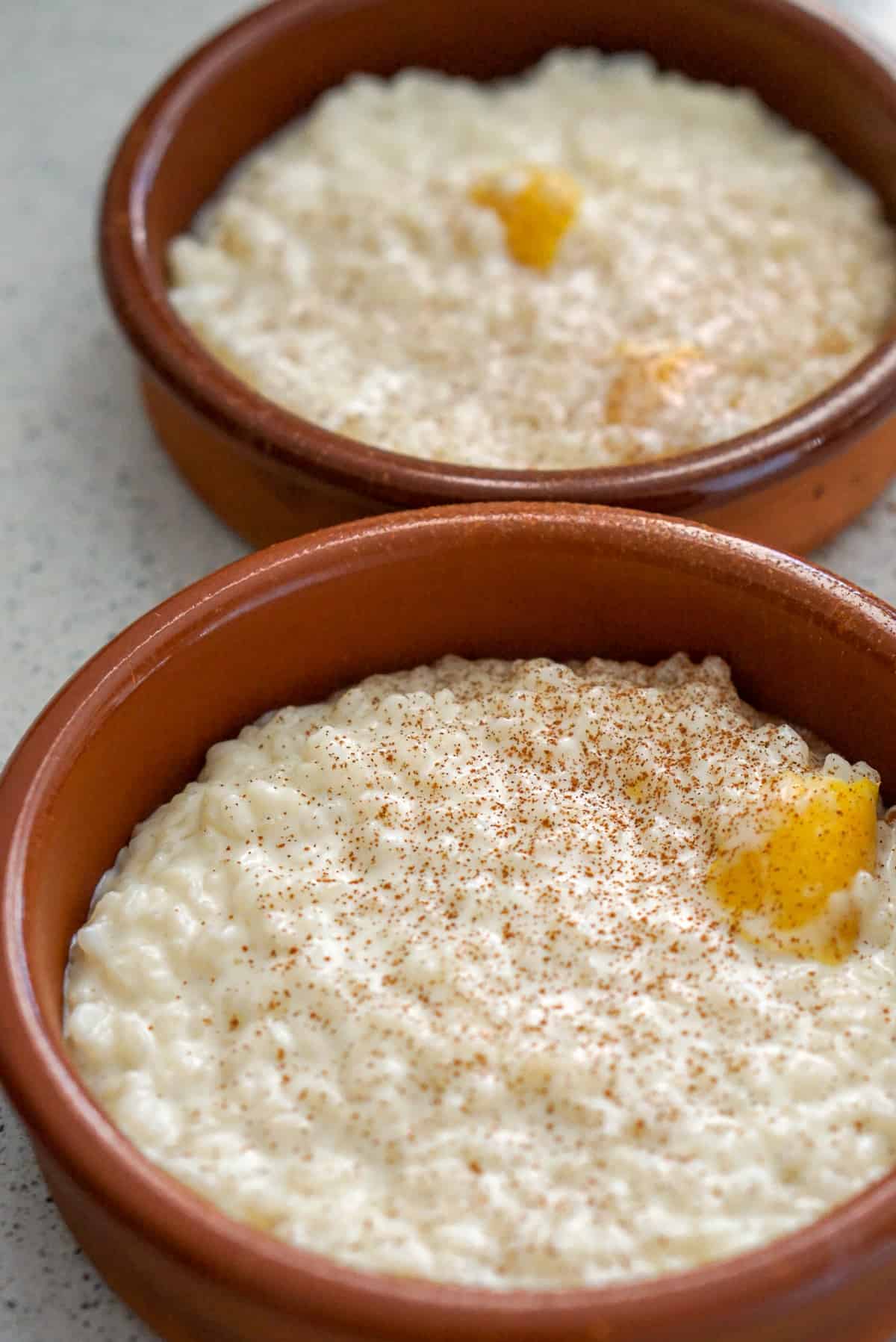
This is arguably the best part of any Spanish meal, whether dining out or eating at home!
Dessert in Spain can be anything from a slice of chocolate cake to a piece of fruit. The former usually comes after dinner, while the latter is more common after lunch. If you order a menú del día, your dessert will often be included in the price of your meal.
Another important dessert-related word is casero (homemade). Many restaurants in Spain offer packaged products like yogurts, ice cream bars, or chocolates on their dessert menu. While some of these can be decent, nothing beats homemade sweets.
Whenever you're handed a dessert menu in Spain, be sure to ask which items are actually made at the restaurant!
How to use it: ¿Qué postres caseros tenéis? (What homemade desserts do you have?)
9. Vino Tinto: Red Wine
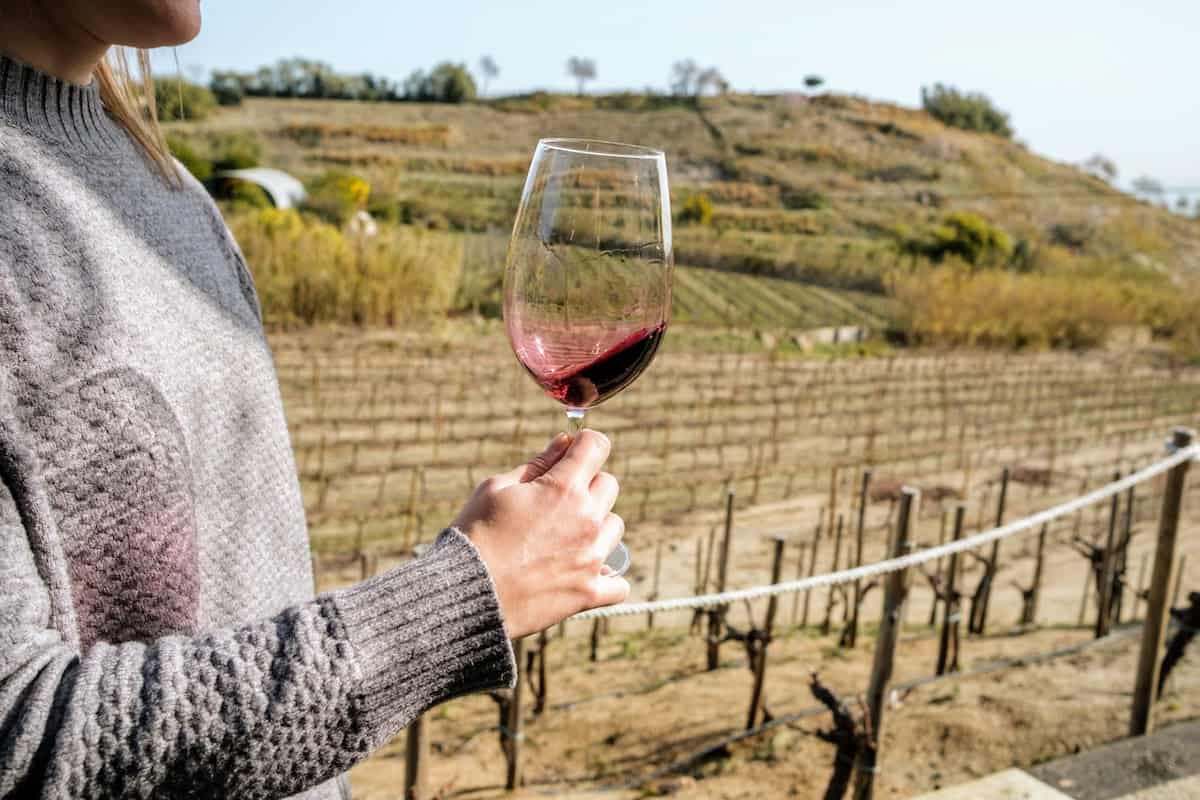
If you're not picky about wine, asking for a vino tinto will get you a glass of the house red. But if you want to get more specific, keep in mind that wine in Spain is almost always ordered by the region, not the grape.
When it comes to red wines in Spain, two regions all but dominate drink menus and wine lists: Rioja and Ribera. The former is Spain's best-known wine region even abroad, but the latter is starting to give it a run for its money.
Wines from Rioja tend to be lighter and fruitier than their more tannic and juicier Ribera counterparts. Both regions produce primarily tempranillo grapes.
How to use it: Ponme una copa de vino tinto de Rioja, por favor. (I'll have a glass of red wine from Rioja, please.)
10. Vino Blanco: White Wine

Spain's most prized white wine grape is albariño, which comes from the northwestern province of Galicia. Albariño is an exception to Spain's order-by-the-region rule, as it's the name of the grape, not the region.
Wines from the Rueda region, which tend to be lighter and fruitier than albariños, are gaining momentum in the small but mighty world of Spanish whites. Even Rioja produces some excellent white wines that, while not as well-known as their red counterparts, are well worth a try!
How to use it: ¿Qué vinos blancos tenéis? (What types of white wine do you have?)
11. Vaso de Agua (de Grifo): Glass of Tap Water
To get a glass of water at a restaurant in Spain, you have to specifically ask for it. If you just ask for agua, the server will almost always bring a large bottle.
For just a plain old, free glass of tap water, it's necessary to specify that you want a glass (vaso) of water, as opposed to a bottle. De grifo means from the tap, to make it extra clear.
Tap water in Spain is safe to drink. However, in many coastal cities like Barcelona and Málaga, the taste can be a bit off. While it won't make you sick if you do consume it, you're better off asking for bottled water (una botella de agua), which tastes much better!
How to use it: ¿Nos pones dos vasos de agua de grifo? (Could you bring us two glasses of tap water?)
12. Cortado: Coffee with a Splash of Milk
Ordering coffee in Spain comes with a whole new set of vocabulary. First up is the humble cortado. Literally translated, cortado means "cut." And in the food world, the thing being cut is coffee.
A cortado is a shot of espresso "cut" with a splash of steamed milk and topped with a spoonful of foam. You can use it as a noun: "I'd like a cortado." Or you can use it as an adjective: "I'd like a café cortado."
Outside of the culinary realm, cortado means "cut" more literally, as in "¿Te has cortado el pelo?" (Have you cut your hair?).
How to use it: Me das un cortado, por favor? (Could you bring me an espresso with a splash of foamed milk, please?)
13. Café con Leche: Half Coffee, Half Milk

The most popular Spanish coffee drink is the ubiquitous café con leche, or Spain's answer to a latte. This drink consists of equal parts coffee and milk. You can also specify what temperature you'd like the milk to be: go for caliente if you want hot milk, or templada for lukewarm milk that will prevent you from burning your tongue!
How to use it: Quiero un café con leche, con la leche templada. (I'd like a coffee with lukewarm milk.)
14. A La Brasa: Charcoal-Grilled
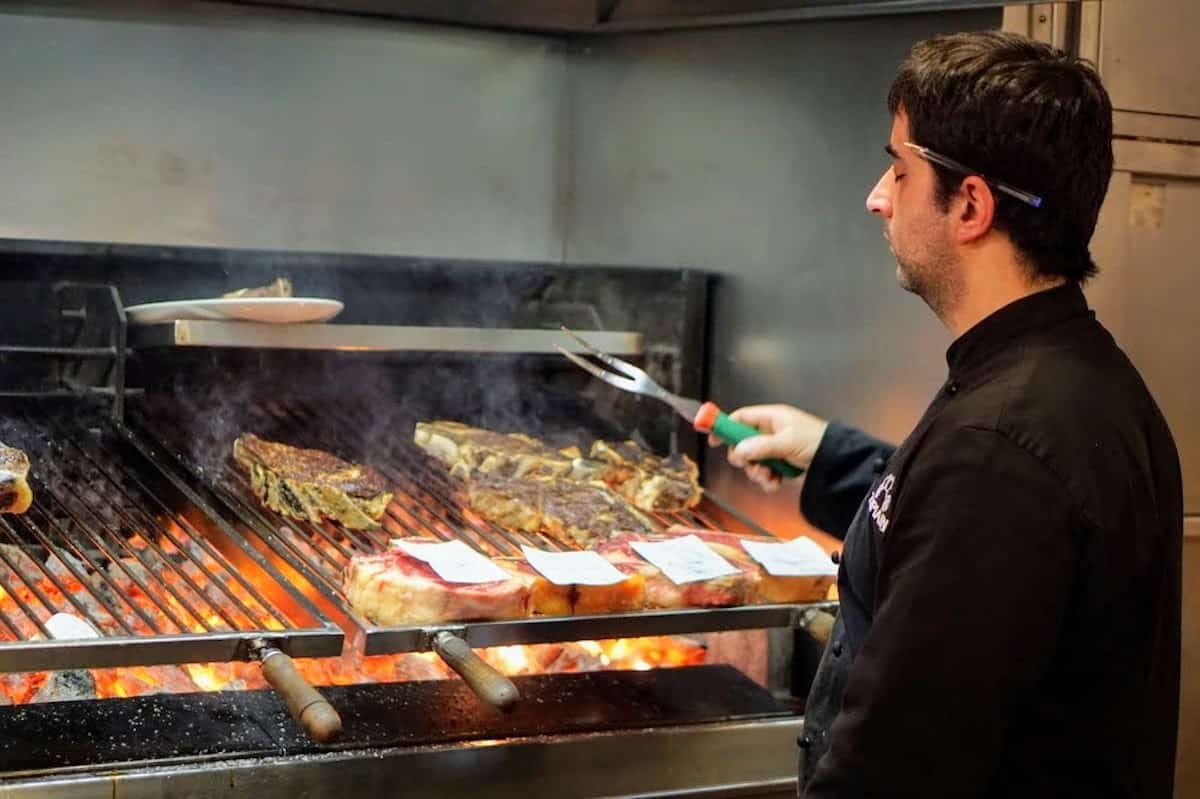
If you're craving something grilled, a la brasa is the way to go. This term is only used when items are grilled over a flame and charcoal. Typically, only meat or octopus is commonly prepared a la brasa.
How to use it: Pulpo a la brasa es mucho más rico que pulpo a la gallega. (Charcoal-grilled octopus is much tastier than Galician-style boiled octopus.)
15. A La Parrilla: Grilled
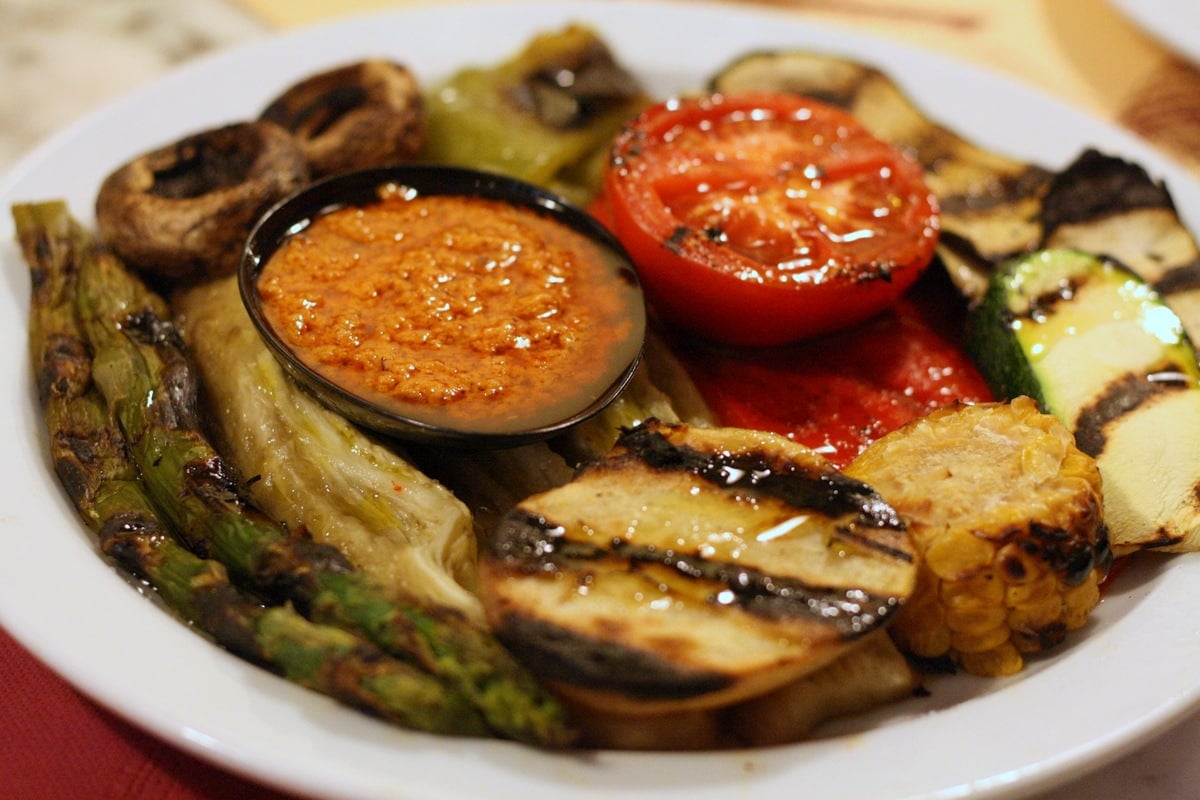
Parrilla literally refers to the metal grill top that's placed over a fire to cook with. In practice, many of the items served a la parrilla are actually cooked on a grill pan on the stove, not over a fire. You'll still get those nice grill marks, though!
How to use it: Prefiero verduras a la parrilla a verduras al horno. (I prefer grilled vegetables to baked vegetables.)
16. A La Plancha: Cooked on a Griddle

A plancha is a large, flat, metal cooking surface that's common in most restaurants. In Spain, everything from fish filets to garlicky mushrooms are seared on this type of hot griddle. If the menu doesn't specify how an item is cooked, it's safe to assume it will be a la plancha.
How to use it: A mí me encanta el salmón a la plancha, pero no me gusta el salmón ahumado. (I love salmon that's been cooked on a griddle, but I don't like smoked salmon.)
Dining Out in Spain Vocabulary FAQs
Cañas are the small draft beers that are popular accompaniments to tapas. Their small size allows them to stay cold in the time it takes you to finish your dish. That's why you'll often see locals drinking them while nibbling on tapas in Spanish bars!
The Spanish word for "grill" is parrilla. However, at restaurants in Spain, this term usually refers to food cooked in a grill-style pan on a stovetop. If you want something charcoal-grilled over a flame, look for the term a la brasa.
In Spain, you can simply say "la cuenta, por favor" (the check, please) when you catch your server's attention. Another common phrase many locals use is "¿Nos cobras cuando puedas?" (literally "Can you charge us when you can?"). Either one is a perfectly fine way to ask your server to bring the bill.
Though you can technically seat yourself at Spanish restaurants (there's no host or hostess), it's generally considered polite to catch a server's attention and ask if a table is available—especially during peak times when the restaurant is busy.
To do so, just ask for "una mesa para dos" (a table for two), or however many people are in your party. If tables are available, the server will usually just invite you to grab whichever one you like.
Hungry for more? Sign up for my free weekly newsletter and receive a new Spanish recipe once a week! Join today and get my FREE Spanish ingredient essentials guide!


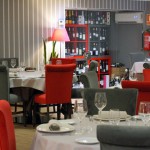

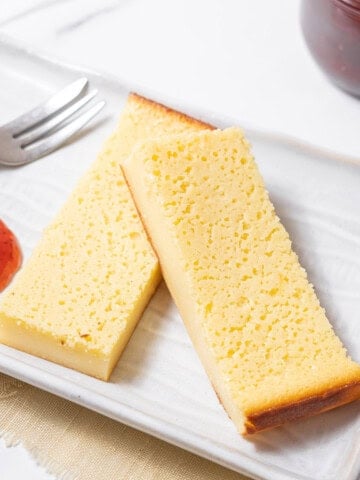
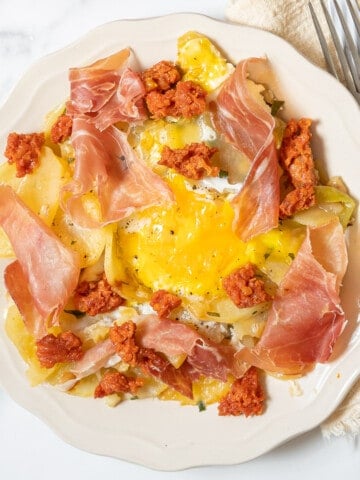
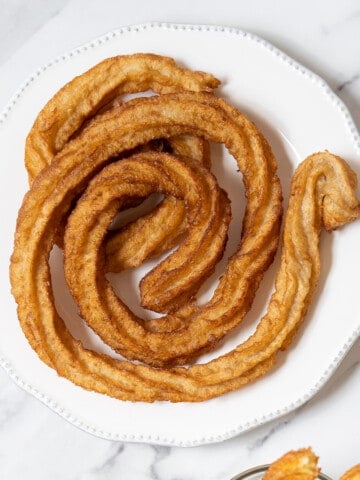
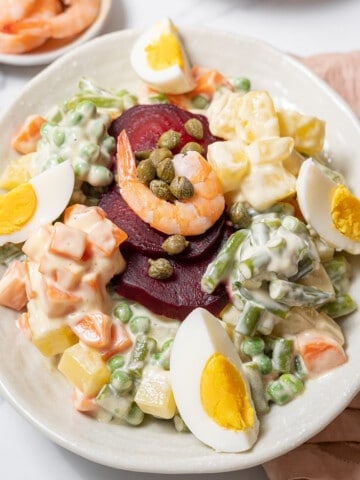
Virginia
This is great, we share it on twitter.
I'll add "¿Qué me recomienda?" in case you don't know what to choose 😀
Isabel
Do not ask for "tinto" for red wine, otherwise you would get a "tinto de verano" a light watery sangria. Delisous but watery and light not what you expect fron a Rioja or Ribera del Duero, red wines. Unless it is hot, and you just wast refreshment!
Jan Davis
So interesting! Thanks for the tip about not asking for "tinto" - That's what I typically ask for here in Mexico!
Frank Teixeira
Ask for La dolorosa (the pain) instead of la cuenta especially after having consumed Vieira's (scallops) or pulpo (octopus).
Waseem Kazi
Can anyone PLEASE tell me that what's the COMMON word used or spoken in Spain for "STEAKHOUSE"?
THANK YOU, THANK YOU & THANK YOU!!!"
Lauren Aloise
"Asador" is a pretty safe bet-- though depending on the region in Spain they may be known for other meat (lamb for example) as opposed to just steak.